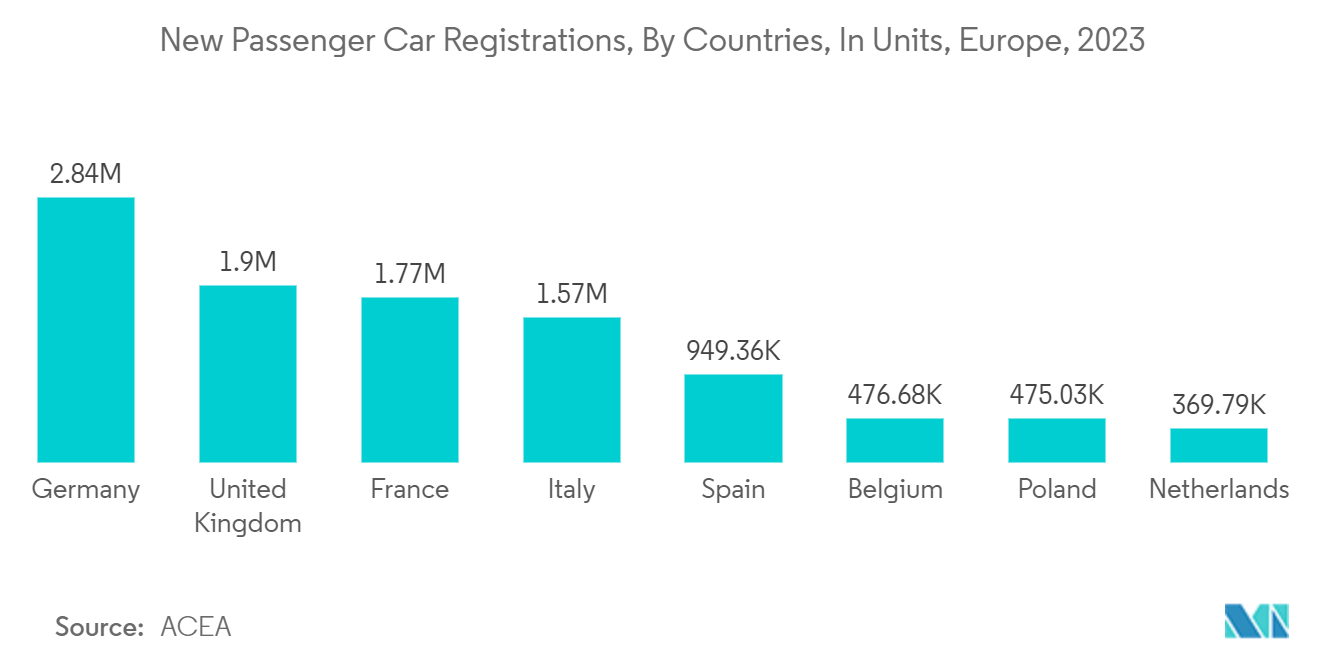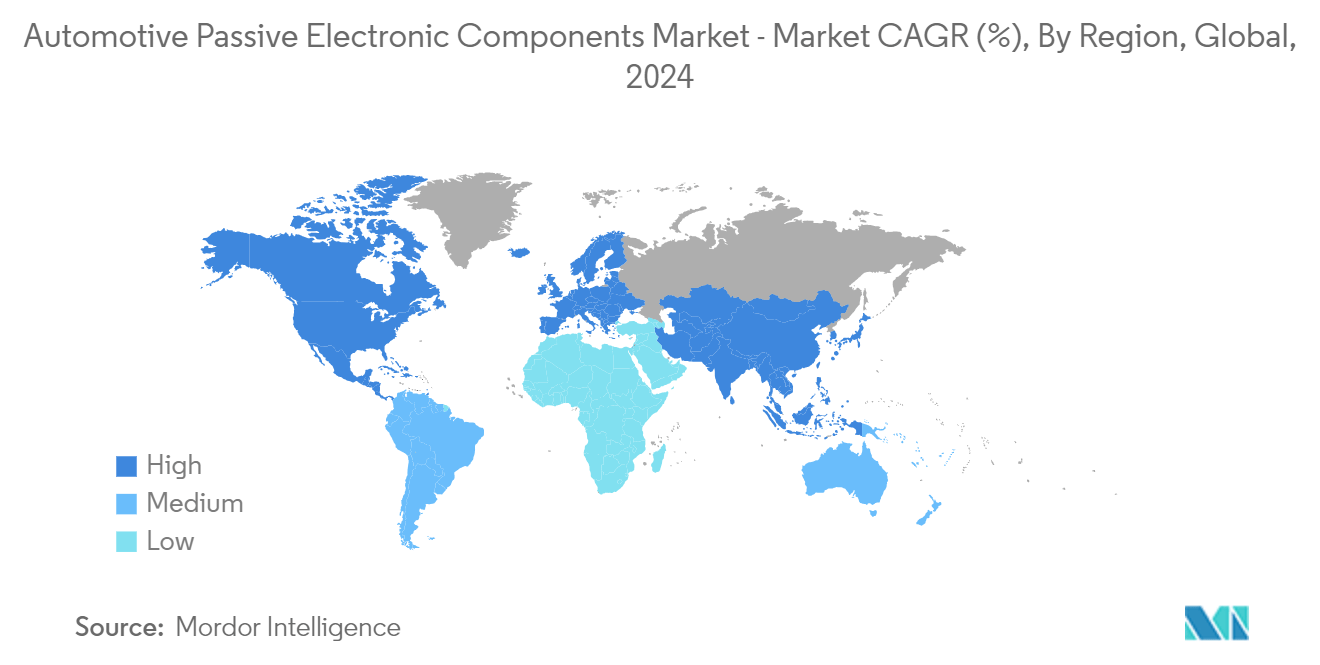Market Trends of Automotive Passive Electronic Components Industry
Capacitors to Witness Significant Growth
- Advancements in capacitor technology have led to the development of smaller, lighter, and more efficient capacitors. This enables automotive manufacturers to design compact and lightweight electronic systems, reducing overall vehicle weight and improving fuel efficiency. The increasing adoption of ADAS (advanced driver assistance systems), infotainment systems, and automobile connectivity features require robust and reliable electronic components. Capacitors support implementing these features by providing a stable power supply and ensuring the smooth operation of sensors, cameras, and communication modules.
- For instance, in August 2023, TDK Corporation in India (Nasik) was set for business prospects as it has enhanced its capacity. This specific facility in Nashik is growing its production capabilities and has introduced a new structure spanning approximately 23,000 square meters. In the coming four years, more production lines will be established for DC capacitors used in automotive sectors. These capacitors will be manufactured for the local market in India and overseas export. The increase in capacity creates new prospects that will support the company's medium-term growth strategy.
- Stringent government regulations and fuel economy standards drive the demand for energy-efficient automotive systems. Capacitors help optimize energy usage and minimize power losses, aligning with regulator requirements and sustainability goals. Capacitors are integral to the functioning of automotive electronic systems, and the demand is expected to continue growing as vehicle electrification, connectivity, and automation trends accelerate.
- For instance, in May 2024, Hyundai Motor Co. planned to utilize the investment already set aside for the United States to manufacture hybrid vehicles at its EV plant. The third-largest automaker globally, along with affiliate Kia Corp, intends to use funds allocated for EV and battery manufacturing facilities in Georgia to produce hybrid cars. Hyundai Motor Group of South Korea, which includes Hyundai Motor and Kia, announced plans to invest USD 12.6 billion in building new electric vehicle and battery production plants in Georgia, marking its most significant investment outside of South Korea.

Europe to Hold Significant Market Share
- Europe is home to some of the world's largest automotive markets, including the United Kingdom, Germany, and France. Europe accounts for a significant portion of worldwide vehicle production and sales. The rising demand for commercial and passenger vehicles in these countries contributes to the market for passive electronic components used in various automotive systems.
- Europe is experiencing rapid growth in the adoption of electric vehicles (EVs), battery electric vehicles (BEVs), and hybrid electric vehicles (HEVs). European government incentives and technological advancements are driving the shift toward electrified powertrains. This transition increases the demand for passive electronic components such as capacitors, inductors, and resistors used in electric drivetrains, battery management systems, and onboard electronics. For instance, in 2023, electric cars, including both BEV and PHEV, accounted for approximately 4.8& of passenger cars in Germany, as reported by KBA. The proportion of electric vehicles has steadily risen each year within the specified time frame, particularly for BEV models.
- The automotive industry in European countries like the United Kingdom, Germany, and France is at the forefront of innovation, strongly focusing on developing advanced vehicle technologies. This includes the integration of smart features, connectivity solutions, and ADAS. These technologies require various passive electronic components to support functions such as vehicle networking.
- For instance, in November 2023, the United Kingdom government allocated EUR 150 million (USD 189 million) as part of a larger EUR 4.5 billion (USD 5.7 million) investment to support British manufacturing and stimulate economic expansion. This funding is aimed at the connected and automated mobility (CAM) sector up to 2030. The budget allocated to help CAM will be supplemented by industry contributions, which will allow the United Kingdom's Centre for Connected and Autonomous Vehicles (CCAV) to solidify the UK's position as a global leader in the creation, advancement, implementation, and production of self-driving technologies, products, and services.


